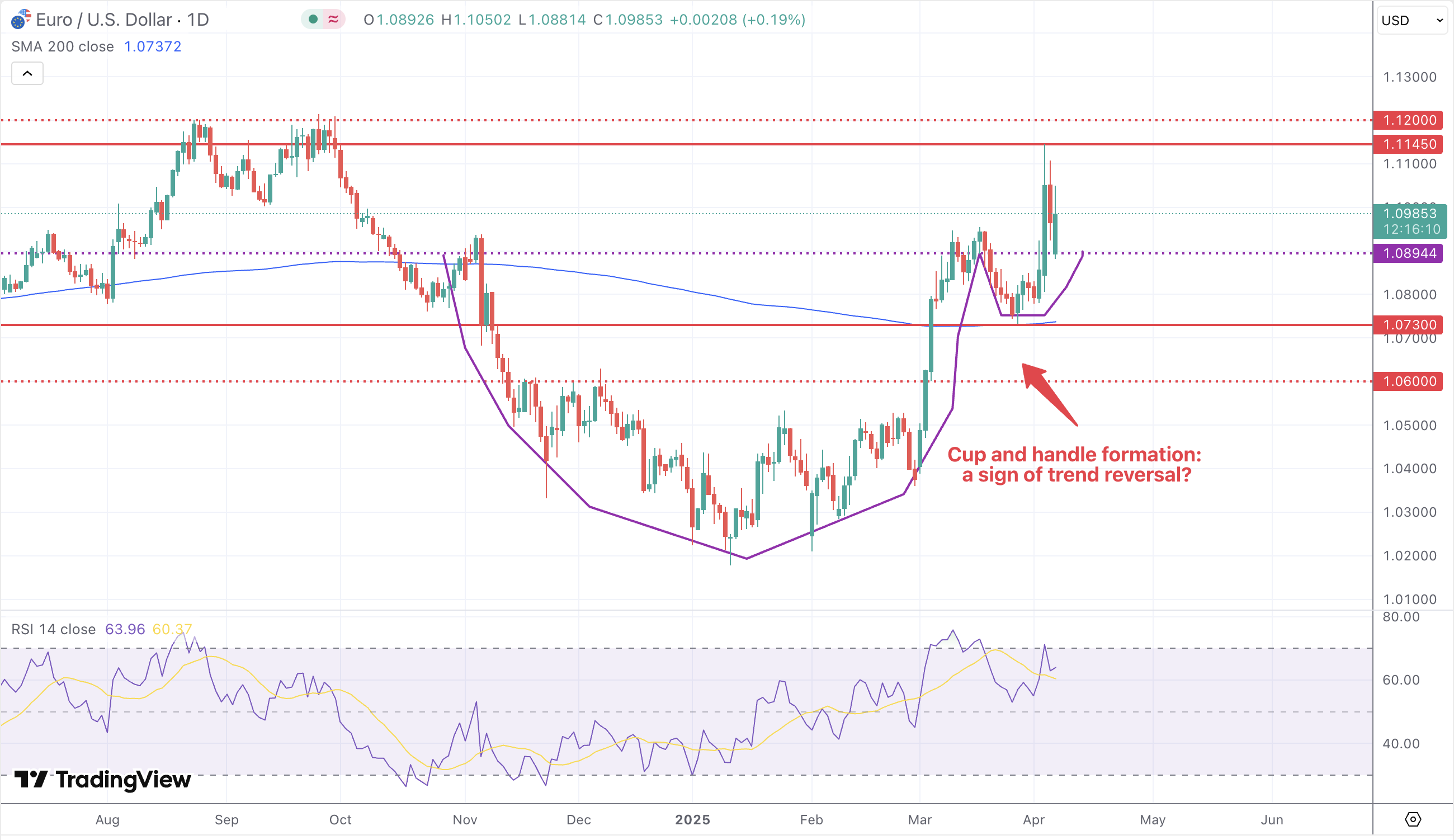Key Takeaways
- EUR/USD reached a multi-month high near 1.1150 amid escalating U.S. trade tensions before retracing to around 1.1000.
- Technical indicators suggest consolidation, with resistance at 1.1145 and support around the 200-day SMA at 1.0730.
- Fundamental factors, including ECB monetary policy and U.S. trade actions, continue to drive market sentiment.
- Upcoming economic data releases and geopolitical developments will be pivotal in determining the pair’s near-term direction.
Market Dynamics and Recent Performance
In the past week, EUR/USD experienced significant movements, reaching a multi-month high near 1.1150 before retracing to around 1.1000. This surge was largely driven by the U.S. administration’s announcement of widespread tariffs, which weakened the U.S. dollar and bolstered the euro. However, the pair’s pullback reflects market consolidation and profit-taking activities.
Technical and Fundamental Influences
From a technical perspective, EUR/USD is navigating key support and resistance levels. Immediate resistance is observed at the recent high of 1.1145, with further upside potential toward the 2024 peak past 1.1200. On the downside, support is identified around the 200-day Simple Moving Average (SMA) at approximately 1.0730. The Relative Strength Index (RSI) has retreated from overbought conditions, indicating a potential for consolidation or corrective movements.
Fundamentally, the euro’s strength has been bolstered by improved investor sentiment following the European Central Bank’s (ECB) recent monetary policy adjustments, including a 25 basis point rate cut and indications of potential further easing. Conversely, the U.S. dollar has faced pressure due to escalating trade tensions and market expectations of Federal Reserve rate cuts in response to protectionist policies.
Looking Forward
In the upcoming week, EUR/USD’s performance will be influenced by several critical factors. Market participants will closely monitor developments related to international trade policies, particularly any retaliatory measures from the European Union in response to U.S. tariffs. Additionally, key economic data releases, including U.S. Non-Farm Payrolls and eurozone inflation figures, will provide insights into the economic health of both regions and potential central bank actions. Given the current environment of uncertainty, the pair may exhibit heightened volatility as traders react to unfolding events.


